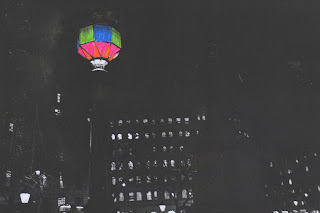I found this shoot interesting and largely successful due to fact that I enjoy the effect which can be created from the partial lighting and directed shadows with this effect. I particularly enjoyed editing the images as I was able to use duotone effects in order to create a differently coloured effect with the same tonal contrast as a black and white image, I also enjoyed creating the tonal contrast by editing the images to a black and white state.
Favourite image
1/125, F16, ISO 200
This is my favourite image from this shoot as I enjoyed the way in which the purple duotone effect on the image created an interesting tonal range as well as adding a surreal effect to the subjects appearance and skin tone. I also feel that the fact that parts of the subjects face cannot be seen as a result of the 3/4 pose and heavy shadows as a result of the low-key lighting which adds a sense of mystery to the image.
Least favourite image
1/125, F16, ISO 200
This is my least favourite image due to the fact that I feel that the tonal range in this image is too low and that the image does not have a large sense of contrast. The lack of contrast in the image makes it appear somewhat dull.
If I were to revisit this topic I would consider experimenting with a wider range of duo tone colours as well as creating black and white images with a stronger sense of contrast.
Aspirations
Below are a selection of images using low-key lighting which is find interesting and would aspire to recreate if I returned to this topic.

























































